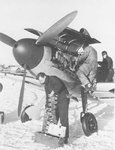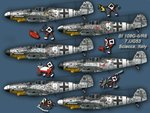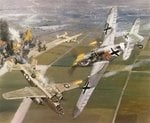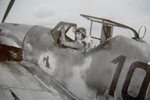Well I decided to start a thread about my favorite aircraft the Bf-109. I personally love the aircraft. It is my favorite of WW2. I know there have been many topics about it but I kind of figured to make a tribute thread about it and this it can be used after that to ask whatever questions, since I have seen several threads devoted to certain aspects of the Bf-109 such as flaps. I hope you enjoy this thread.
Basically I will post a history of the Bf-109 and let others take it from there.
Willie Messerschmitt the designer of the Bf-109 joined Bayerische Flugzeug Werke A.G. which had merged all the aircraft companies from the Bavarian region. In 1934 the RLM (Reichsluftfahrministerium) made a specification for a monoplane fighter and called on Heinkel, Arado, and Focke-Wulf to design such an aircraft. Bayerische Flugzeug Werke did not recieve the tender until almost 9 months later. Work progressed quickly by Messerschmitt and his group taken the basis from the successful Bf-108 Taifun.
The Bf-109 was built for simplicity of construction, maintenance, and operation incorporating an all metal, ovoid cross section fuselage, outward retracting landing gear, low single spar canteilever wing patented by Messerschmitt, closed cockpit canopy and movable leading edge slats. The aircraft was concieved for mass production and relied on cheap interchangable parts on non strategic materials.
The first prototype was the Bf-109V-1 (Werk Nr. 758) (Reg. D-IABI) was powered by a 695hp liquid cooled Rolls-Royce Kestrel engine. This was fitted with a shwartz fixed pitch 2 blade propeller. This was to be used until the delivery of the Jumo 210. Bf-109V-1 was first flown by Hans D. "Bubi" Knutsch on May 28, 1935.
While the Focke-Wulf and Arado prototypes were imediatly canceled the Messereschmitt and Heinkel prototypes remained in contention. The Bf-109V-1 proved perform better in a dive and more maneuverable and slightly faster however was not without its own problems. It had a very narrow undercarraige which even buckled at the initial reception at the Luftwaffe Testing Center at Rechlin. It also had a cramped cockpit, and heavy wing loading (118kg/m3) which imposed approach and take off speeds deemed to high at the time.
The Bf-109V-2 (Reg. D-IUDE) was powered by the 610hp Junkers Jumo 210A engine and had a strenghted undercarriage. BF-109V-3 (Reg. D-IOQY) was identical to teh V-2 except that it was the first prototype to be armed. It had 2 7.9mm MG 17 machine guns in the wings The Bf-109V-4 (Reg. D-IOQY) was also identical excpet that in addition to the 2 MG 17's it also incorporated a third MG-17 in the nose through the engine block and this eventually gave birth to the Bf-109B. Bf-109V-5 and V-6 were identical but powered by a Junkers Jumo-210D and a reinforced windshield, a cooling system for the machine gun where 3 slots replaced teh air intake and to the wing which redesigned at wing roots around the undercarriage.
Four Bf-109s (V-3, V-4, V-5, and V-6 along with the Heinkel He-112V-3) were sent to Spain to be tested in the Civil War there. They joined the Condor Legion 2/J88 which at the time was equiped with Heinkel He-51's. Initial combat testing showed that the Jumo 210 engines were not as reliable as needed, and the aircraft needed better handling skills. They however were impressed with the aircraft and saw the true potential of it.
The Condor Legion began to replace its He-51's with Bf-109B-1's. which was powered by a Jumo-210D. The Bf-109B-2 was different only in having a metal variable pitch VDM Hamilton Standard propellor and the pointed spinner of the previous 109's was replaced by a truncated spinner and a Jumo 210E engine. Most B-2s however recieved the 210D because of the lack of the 210E.
The Bf-109V-7 (Werk. Nr. 881) (Reg. D-IJHA) were powered by the 700hp fuel injected with 2 stage compressor Jumo 210G and was first shown at the International Flying Meeting in Zurich in July/August 1937. The Bf-109V-8 was identical except having a Jumo-210Ga.
These prototypes led to the development of the Bf-109C series. The engine hood was changed with the exhaust pipes now sticking through the airframe. The Bf-109C-1 also was armed with 4 MG-17's in the wings. The Bf-109C-2 was armed with 5 MG-17's, 4 in the wings and 1 in the engine block.
Next came the Bf-109V-9 which was pretty much identical except that it was armed with 20mm cannons in the wings rather than MG-17's. The Bf-109V-10 was the first varient to use the famed DB 600 series of engines. It was powered by a DB-600 engine. The V-11, V-12 were also powered by the same engine.
The Bf-109V-13 (Werk. Nr. 1050) (Reg. D-IPKY) was orginally equipped with the DB-600 engine, however for the Zurich Meeting of 1937 it was re-equipped by a DB-601A with a metal VDM variable Pitch Proppelller. At the Zurich meeting it set the world speed record of 610.54km/h (379.38mph) on 11 November 1937. The Bf-109D series was derived from the V-10-V-14. The initial varients were meant to have the DB-601 however they were just not available in numbers and it used the Jumo-210G until more were available. The Bf-109D-1 was powered by the 986hp DB-600A and armed with a 20mm Cannon in the engine block as well 2 MG-17s. The Bf-109D-2 was armed with an additional 2 MG-17's in the wings as well as the armament of the D-1. The Bf-109D-3 replaced the MG-17's in the wings with 2 20mm Cannon in the wings.
The Bf-109V-14 was powered by a fuel injection 1175hp DB601A engine and led to the famed Bf-109E or 'Emil'. The main design of the aircraft was the same as the Doras however it was lengthened by 25cm due to the new engine. It also had a smaller air intake and flat radiators under the wings. It used a variable pitch all metal 3 bladed VDM9-11081A propeller. The Bf-109E-0 was armed with 4 MG-17's in the nose and the wings. The Bf-109E-1 was essentially the same and was infact a mass production of the E-0. One major set back was that it did not have armour protecting the pilot or the fuel cells. The Bf-109E-2 was essentially the same except that included 2 MG-17's in the nose, 2 MG-17 in the wings, and 1 MG-FF in the engine block. The Bf-109E-3 recieved an improvement in the armament with 2 MG FF in the wings. Armoured plating was installed in the cockpit. The Bf-109E-3/B was a fighter bomber version. In 1940 the Bf-109E-4 was introduced. It saw the removal of the Hub fired 20mm Cannon and more armoured protection was installed. The Bf-109E-4/Trop was a tropical/desert version with modified air intake filter. As with the Bf-109E-3/B the E-4/B was a fighter bomber varient. Several versions of the Bf-109E-4 were powered by a DB-601N engine with a 15% higher compression rate at 1200hp. These became known as Bf-109E-4/Ns. Bf-109E-5 and E-6 were photo recon varients and used the DB-601A. It was armed with 2 MG-17s and carried Rb-21/18 camaras. The E-6 the same except using the RB-50/30. The Bf-109E-7 was essentially the same but modified for use with a 66 Gallon drop tank. It incorporated other new features including the return of the pointed spinner and a telescopic sight. The Bf-109E-7/Z used the GM-1 Boost system, and there was also a E-7B fighter bomber varient. The Bf-109E-8 was essentially the same but used the DB-601E engine. The Bf-109E-9 was the photo recon version derived from teh Bf-109E-8.
Designed from the Bf-109E varients was the Bf-109T. The Bf-109T-1 was a carrierborne version of the Bf-109E meant for use from the Graf Zeppelin class carriers being built by the Germans. It incorperated a longer wing span, an arrestor hook and was powered by the DB-601N. I personally believe that it was not well suited for Carrier operations, mainly because of the narrow track and poor visability when the aircraft is on the ground. The Bf-109T-2 was just a modificaiton of the T-1, having its carrier gear removed for ground operations.
The Bf-109F series saw the first real radical change in design of the Bf-109 since the C/D/E varients. It also introduced a substantial increase in performance. In my opinion it was the best of the Bf-109 varients. Not necessarily my favorite (Bf-109G-6) but the best varient. The wings wree rounded off at the tips and it incorporated shorter leading edge slats, shorter ailerons and an increase chord to keep the same efficienceny, the rudder was slightly reduced, the tailwheel became partially retractable, the underwing radiators were made shallower and finer, the nose was more streamlined and the spinner rounded and more streamlined with the nose to reduce drag. Horizontal tail surfaces were now thicker, more solid and cantilever. The braces under the horizontal surfaces were removed and the tips rounded. Some people will go as far as saying that the Bf-109F series were the most beautiful of the Bf-109s.
The Bf-109F-1 was armed with one MG 151 20mm Cannon and 2 MG-17 and was powered by the DB-601N. The F-1/B was a fighter bomber and the F-1/B Trop was a desert/tropical modification. The Bf-109F-2 was nearly identical only difference being armed with a MG-151/15 cannon. Other varients being the F-2/B, F-2 Trop, and F-2/Z fitted with the GM-1 Boost system. The Bf-109F-3 was powered by the DB-601E engine. The Bf-109F-4 was essentially the same as the F-3 but incorporating better armour protecton for the pilot and armed with the MG-151/20 Cannon. There also was a F-4/B, F-4 Trop, and F-4Z.
The next major varient of the Bf-109 was the Bf-109G series which was built around the DB-605 engine and was the most produced varient of the Bf-109. The Bf-109G-0 was essentially a Bf-109F-4 with some modifications made to it mostly being a larger radiator fairing. The G-0 was marred by problems including the radiator oil catching fire. To prevent this the 2 cooling fairing were added and this led to the Bf-109G-1. The Bf-109G-1 had a pressurized cockpit and the canaopy was redesigned and strenthened. The Bf-109G-2 was identical to the G-1 only the cockpit was not pressurized. The pilots seat was entirely armoured. There was also a G-2/Trop. The Bf-109G-2/R-2 was a recon varient fitted with the GM-1 Boost system. The Bf-109G-3 was a high allitude fighter varient with a pressurized cockpit and the series was built in paralell with the Bf-109G-4. The Bf-109G-4 was non pressurized and differed from the G-2 only in that it had larger wheels to support the increased weight of the G series aircraftand the position of the radio antennas. There was also a G-4/Trop desert/tropical version, G-4/R2, and G-4/R4 versions that were photo recon and the G-4/U3 equiped with the MW50 injection system. The Bf-109G-6 was produced in the greatest numbers (over 12,000 aircraft produced). It was powered by the DB-605A engine and was armed by 2 MG 131 13mm Machine Guns and 1 MG 151/20 20mm Cannon in the nose. This aircraft was the first to have the fairings to cover the breaches of the new MG-131s to be installed in front of the cockpit. In 1943 the Galland Hood replaced the standard 109 canopy. It was a bullet proof glass canopy to protect the pilot. Later these were replaced with the Erla Hood which had simplified structural supports. Beginning in 1944 it recieved a new tailfin and larger rudder. Other versions of the Bf-109G-6 included the G-6/R-2 fitted with RB-50/30 camaras, G-6/R-3 fitted with RB-75/30 camaras, G-6 Trop, G-6/U2 with GM-1 Boost, G-6/U3 with MW50, G-6/U4 with 30mm MK 108 cannon, G-6/U4N which was a night fighter varient fitted with the Naxos FuG 350 radar detection system, G-6/U5 with MG-151/20 Cannon, G-6Y with FuG 16ZY whip antenna, and G-6AS with a DB-605AS engine with a bigger turbo charger for high alltitude use. The Bf-109G-12 was a 2 seat trainer version built from existing G-2 and G-6 models. The Bf-109G-14 was actually built before the Bf-10910 because the DB-605D engine was not ready. The major differeence to a G-6 was the larger tail wheel. The Bf-109G-10 was powered by a 2000hp DB-605D engine. The Erla Hood was standard, The bumps covering the breaches on the G-10 were smaller than those of the G-6 if they were instlaled with the DB-605DM which was a 605D with MW-50 system.
The next and last major varient of the Bf-109 was the the Bf-109K. The Bf-109K was fitted with the 2000hp DB-605D engine and pretty much resembled the Bf-109G-10. There were several varients planned including the K-1 which was to be pressurized, the K-2 standard, and the K-3 reconnaisance) These were all abandoned with the K-2 possibly having a few built. The Bf-109K-4 was however produced in numbers with about 1700 actually being built before wars end. The only major differences being the circular antenna on the back moved on fram and put slightly higher, the access panel for the radio being put slightly higher up, the ailerons fitten with trim tabs and extra undercarraige doors. The standard armament of the Bf-109K-4 was 2 MG-131/13 13 mm Machine guns and 1 MG 151/20 20mm Cannon or one MK 108 30 mm Cannon. The Bf-109K-6 was standard with the MK 108 however was only tested. A recon version the Bf-109K-8 never left the drawing board as well as the Bf-109K-12 2 seat trainer. The final version of the Bf-109K was to be the Bf-109K-14 high alltitude varient. It was to be powered by the DB-605L but never was produced.
There are actually many many more subvarients of the Bf-109 especially of the Bf-109G verients. I did not cover all, frankly because I got tired of typing and to also leave it open for more discussion.
Performance Stats
Bf-109B
Powerplant:
Bf 109B-0:
Model: Junkers Jumo 210B
Type: Liquid-cooled, inverted V12
Number: One Horsepower: 610 hp
Bf 109B-1:
Model: Junkers Jumo 210D
Type: Liquid-cooled, inverted V12
Number: One Horsepower: 635 hp
Bf 109B-2:
Model: Junkers Jumo 210E
Type: Liquid-cooled, inverted V12
Number: One Horsepower: 640 hp
Dimensions:
Wing span: 32 ft. 4½ in. (9.87m)
Length: 27 ft. 11 in. (8.51m)
Height: 8 ft. 6 in. (2.59m)
Wing Surface Area: N/A
--------------------------------------------------------------------------------
Weights:
Empty: 3,483 lbs. (1580kg)
Max. Loaded: 4,850 lbs. (2120kg)
Performance:
Maximum Speed: 292mph (470kph)
Range: N/A
Initial climb: 2,200 ft/min (670.5m/min)
Service Ceiling: 26,575 ft. (8100m)
--------------------------------------------------------------------------------
Armament:
Two 7.92mm MG 17 machine guns above engine.
One 7.92mm MG 17 machine guns firing through hub.
Avionics: N/A
Bf-109C
Type: Day fighter
Origin: Bayerische Flegzeugwerke
Crew: One
Service Delivery: Spring, 1938
Production: N/A
--------------------------------------------------------------------------------
Powerplant:
Bf 109C-1:
Model: Junkers Jumo 210Ga
Type: Liquid-cooled, inverted V12 Number: One
Horsepower: 700 hp for take-off, 675 hp at 12,470 ft
--------------------------------------------------------------------------------
Dimensions:
Wing span: 32 ft. 4½ (9.97m)
Length: 28 ft. 0.66 in. (8.51m)
Height: 8 ft. 0½ in. (2.59m)
Wing Surface Area: 174 sq. ft.
Weights:
Empty: 3522 lb.
Maximum, Loaded: 5062 lb.
Performance:
Maximum Speed:
Sea Level: 261 mph
14,765 ft.: 292 mph
Range: 405 miles
Initial climb: 2,200 ft/min (670.5m/min)
Service Ceiling: 27,560 ft.
--------------------------------------------------------------------------------
Armament:
Two 7.92mm MG 17 in wings
Ammunition: 420 rpg
Two 7.92mm MG 17 mounted above engine
Ammunition: 500 rpg
Avionics:
N/A
Bf-109E
Type: Single-seat fighter
Origin: Bayerische Flegzeugwerke
--------------------------------------------------------------------------------
Powerplant:
Model: Daimler-Benz 601Aa
Type: Liquid Cooled Inverted V12
Number: One Horsepower: 1,150hp
--------------------------------------------------------------------------------
Dimensions:
Wing span: 32 ft. 4.5 in.
Length: 28 ft. 8 in.
Height: 8 ft. 10 in.
Wing Surface Area: N/A
Weights:
Empty: 4,440 lb.
Maximum, Loaded: 5,520 lb.
Performance:
Maximum Speed: 357 mph at 12,300 ft.
Maximum Climb: 3,100 feet per minute
Range: 412 Miles
Service Ceiling: 36,000 ft.
--------------------------------------------------------------------------------
Armament:
Two 20mm MG/FF mounted in the wings.
Ammunition: 60 rounds per gun
Two 7.9mm MG 17 mounted above engine.
Ammunition: 1,000 rounds per gun
Avionics: N/A
Bf-109F
Type: Single-seat fighter
Origin: Bayerische Flegzeugwerke
--------------------------------------------------------------------------------
Powerplant:
Model: Daimler-Benz 601E
Type: Liquid Cooled Inverted V12
Number: One Horsepower: 1,300hp
--------------------------------------------------------------------------------
Dimensions:
Wing span: 32 ft. 6½ in.
Length: 29 ft. 0½ in.
Height: 8 ft. 6 in.
Wing Surface Area: N/A
Weights:
Empty: 4,330 lb.
Maximum, Loaded: 6,054 lb.
Performance:
Maximum Speed: 390 mph at 22,000 ft.
Maximum Climb: 3,320 feet per minute
Range: 440 Miles
Service Ceiling: 37,000 ft.
--------------------------------------------------------------------------------
Armament:
One 15mm MG 151 mounted between cylinder heads and firing through the propeller hub.
Ammunition: 200 rounds
Two 7.9mm MG 17 mounted above engine.
Ammunition: 500 rounds per gun.
Avionics:
N/A
Bf-109G
Type: Single-seat fighter
Origin: Bayerische Flegzeugwerke
--------------------------------------------------------------------------------
Powerplant:
Bf 109G-1:
Model: Daimler-Benz 605A-1
Type: Liquid Cooled Inverted V12
Number: One Horsepower: 1,475 hp
Bf 109G-6:
Model: Daimler-Benz 605AM
Type: Liquid Cooled Inverted V12
Number: One Horsepower: 1,800 hp*
*With Water/Methanol injection.
Later G models:
Model: Daimler-Benz 605DC
Type: Liquid Cooled Inverted V12
Number: One Horsepower: 2,000 hp*
*With Water/Methanol injection.
--------------------------------------------------------------------------------
Dimensions:
Wing span: 32 ft. 6½ in. (9.92m)
Length: 29 ft. 7 in. (9.02m)
Height: 11 ft. 2 in. (3.40m)
Wing Surface Area: 127.77 sq. ft. (16.05m²)
Weights:
Empty: 5,893 lb. (2673 kg)
Maximum, Loaded: 6,945 lb. (3150 kg)
--------------------------------------------------------------------------------
Performance:
Maximum Speed: 386 mph at 22,965 ft.
Range: 447 Miles (729 km)
Service Ceiling: 38,550 ft. (11,750m)
--------------------------------------------------------------------------------
Armament:
Bf 109G-1:
One 30mm MG 108 cannon firing through hub.
Ammunition: 60 Rounds
Two 13mm MG 131 machine guns above engine.
Two 20mm MG 151 cannon under wings.
Bf 109G-6:
One 30mm MG 108 cannon firing through hub.
Ammunition: 60 Rounds
Or
One 20mm MG 151 cannon
Ammunition: 150 Rounds
And
Two 13mm MG 131 machine guns above engine.
Ammunition: 300 rpg
Bf-109K
Type: Single-seat fighter
Origin: Bayerische Flegzeugwerke
--------------------------------------------------------------------------------
Powerplant:
Model: Daimler-Benz 605
Type: Liquid Cooled Inverted V12
Horsepower: 1,550hp
--------------------------------------------------------------------------------
Dimensions:
Wing span: 32 ft. 6½ in.
Length: 29 ft. 4 in.
Height: 8 ft. 6 in.
Wing Surface Area: N/A
Weights:
Empty: N/A
Maximum, Loaded: 7,438 lb.
Performance:
Maximum Speed: 452 mph at 19,685 ft.
Maximum Climb: 4,823 feet per minute
Range: 365 Miles
Service Ceiling: 41,000 ft.
Armament:
One 30mm Mk 108 or Mk 103 mounted between cylinder heads and firing through the propeller hub
And
Two 15mm MG 151 mounted above engine
Avionics:
N/A
Basically I will post a history of the Bf-109 and let others take it from there.
Willie Messerschmitt the designer of the Bf-109 joined Bayerische Flugzeug Werke A.G. which had merged all the aircraft companies from the Bavarian region. In 1934 the RLM (Reichsluftfahrministerium) made a specification for a monoplane fighter and called on Heinkel, Arado, and Focke-Wulf to design such an aircraft. Bayerische Flugzeug Werke did not recieve the tender until almost 9 months later. Work progressed quickly by Messerschmitt and his group taken the basis from the successful Bf-108 Taifun.
The Bf-109 was built for simplicity of construction, maintenance, and operation incorporating an all metal, ovoid cross section fuselage, outward retracting landing gear, low single spar canteilever wing patented by Messerschmitt, closed cockpit canopy and movable leading edge slats. The aircraft was concieved for mass production and relied on cheap interchangable parts on non strategic materials.
The first prototype was the Bf-109V-1 (Werk Nr. 758) (Reg. D-IABI) was powered by a 695hp liquid cooled Rolls-Royce Kestrel engine. This was fitted with a shwartz fixed pitch 2 blade propeller. This was to be used until the delivery of the Jumo 210. Bf-109V-1 was first flown by Hans D. "Bubi" Knutsch on May 28, 1935.
While the Focke-Wulf and Arado prototypes were imediatly canceled the Messereschmitt and Heinkel prototypes remained in contention. The Bf-109V-1 proved perform better in a dive and more maneuverable and slightly faster however was not without its own problems. It had a very narrow undercarraige which even buckled at the initial reception at the Luftwaffe Testing Center at Rechlin. It also had a cramped cockpit, and heavy wing loading (118kg/m3) which imposed approach and take off speeds deemed to high at the time.
The Bf-109V-2 (Reg. D-IUDE) was powered by the 610hp Junkers Jumo 210A engine and had a strenghted undercarriage. BF-109V-3 (Reg. D-IOQY) was identical to teh V-2 except that it was the first prototype to be armed. It had 2 7.9mm MG 17 machine guns in the wings The Bf-109V-4 (Reg. D-IOQY) was also identical excpet that in addition to the 2 MG 17's it also incorporated a third MG-17 in the nose through the engine block and this eventually gave birth to the Bf-109B. Bf-109V-5 and V-6 were identical but powered by a Junkers Jumo-210D and a reinforced windshield, a cooling system for the machine gun where 3 slots replaced teh air intake and to the wing which redesigned at wing roots around the undercarriage.
Four Bf-109s (V-3, V-4, V-5, and V-6 along with the Heinkel He-112V-3) were sent to Spain to be tested in the Civil War there. They joined the Condor Legion 2/J88 which at the time was equiped with Heinkel He-51's. Initial combat testing showed that the Jumo 210 engines were not as reliable as needed, and the aircraft needed better handling skills. They however were impressed with the aircraft and saw the true potential of it.
The Condor Legion began to replace its He-51's with Bf-109B-1's. which was powered by a Jumo-210D. The Bf-109B-2 was different only in having a metal variable pitch VDM Hamilton Standard propellor and the pointed spinner of the previous 109's was replaced by a truncated spinner and a Jumo 210E engine. Most B-2s however recieved the 210D because of the lack of the 210E.
The Bf-109V-7 (Werk. Nr. 881) (Reg. D-IJHA) were powered by the 700hp fuel injected with 2 stage compressor Jumo 210G and was first shown at the International Flying Meeting in Zurich in July/August 1937. The Bf-109V-8 was identical except having a Jumo-210Ga.
These prototypes led to the development of the Bf-109C series. The engine hood was changed with the exhaust pipes now sticking through the airframe. The Bf-109C-1 also was armed with 4 MG-17's in the wings. The Bf-109C-2 was armed with 5 MG-17's, 4 in the wings and 1 in the engine block.
Next came the Bf-109V-9 which was pretty much identical except that it was armed with 20mm cannons in the wings rather than MG-17's. The Bf-109V-10 was the first varient to use the famed DB 600 series of engines. It was powered by a DB-600 engine. The V-11, V-12 were also powered by the same engine.
The Bf-109V-13 (Werk. Nr. 1050) (Reg. D-IPKY) was orginally equipped with the DB-600 engine, however for the Zurich Meeting of 1937 it was re-equipped by a DB-601A with a metal VDM variable Pitch Proppelller. At the Zurich meeting it set the world speed record of 610.54km/h (379.38mph) on 11 November 1937. The Bf-109D series was derived from the V-10-V-14. The initial varients were meant to have the DB-601 however they were just not available in numbers and it used the Jumo-210G until more were available. The Bf-109D-1 was powered by the 986hp DB-600A and armed with a 20mm Cannon in the engine block as well 2 MG-17s. The Bf-109D-2 was armed with an additional 2 MG-17's in the wings as well as the armament of the D-1. The Bf-109D-3 replaced the MG-17's in the wings with 2 20mm Cannon in the wings.
The Bf-109V-14 was powered by a fuel injection 1175hp DB601A engine and led to the famed Bf-109E or 'Emil'. The main design of the aircraft was the same as the Doras however it was lengthened by 25cm due to the new engine. It also had a smaller air intake and flat radiators under the wings. It used a variable pitch all metal 3 bladed VDM9-11081A propeller. The Bf-109E-0 was armed with 4 MG-17's in the nose and the wings. The Bf-109E-1 was essentially the same and was infact a mass production of the E-0. One major set back was that it did not have armour protecting the pilot or the fuel cells. The Bf-109E-2 was essentially the same except that included 2 MG-17's in the nose, 2 MG-17 in the wings, and 1 MG-FF in the engine block. The Bf-109E-3 recieved an improvement in the armament with 2 MG FF in the wings. Armoured plating was installed in the cockpit. The Bf-109E-3/B was a fighter bomber version. In 1940 the Bf-109E-4 was introduced. It saw the removal of the Hub fired 20mm Cannon and more armoured protection was installed. The Bf-109E-4/Trop was a tropical/desert version with modified air intake filter. As with the Bf-109E-3/B the E-4/B was a fighter bomber varient. Several versions of the Bf-109E-4 were powered by a DB-601N engine with a 15% higher compression rate at 1200hp. These became known as Bf-109E-4/Ns. Bf-109E-5 and E-6 were photo recon varients and used the DB-601A. It was armed with 2 MG-17s and carried Rb-21/18 camaras. The E-6 the same except using the RB-50/30. The Bf-109E-7 was essentially the same but modified for use with a 66 Gallon drop tank. It incorporated other new features including the return of the pointed spinner and a telescopic sight. The Bf-109E-7/Z used the GM-1 Boost system, and there was also a E-7B fighter bomber varient. The Bf-109E-8 was essentially the same but used the DB-601E engine. The Bf-109E-9 was the photo recon version derived from teh Bf-109E-8.
Designed from the Bf-109E varients was the Bf-109T. The Bf-109T-1 was a carrierborne version of the Bf-109E meant for use from the Graf Zeppelin class carriers being built by the Germans. It incorperated a longer wing span, an arrestor hook and was powered by the DB-601N. I personally believe that it was not well suited for Carrier operations, mainly because of the narrow track and poor visability when the aircraft is on the ground. The Bf-109T-2 was just a modificaiton of the T-1, having its carrier gear removed for ground operations.
The Bf-109F series saw the first real radical change in design of the Bf-109 since the C/D/E varients. It also introduced a substantial increase in performance. In my opinion it was the best of the Bf-109 varients. Not necessarily my favorite (Bf-109G-6) but the best varient. The wings wree rounded off at the tips and it incorporated shorter leading edge slats, shorter ailerons and an increase chord to keep the same efficienceny, the rudder was slightly reduced, the tailwheel became partially retractable, the underwing radiators were made shallower and finer, the nose was more streamlined and the spinner rounded and more streamlined with the nose to reduce drag. Horizontal tail surfaces were now thicker, more solid and cantilever. The braces under the horizontal surfaces were removed and the tips rounded. Some people will go as far as saying that the Bf-109F series were the most beautiful of the Bf-109s.
The Bf-109F-1 was armed with one MG 151 20mm Cannon and 2 MG-17 and was powered by the DB-601N. The F-1/B was a fighter bomber and the F-1/B Trop was a desert/tropical modification. The Bf-109F-2 was nearly identical only difference being armed with a MG-151/15 cannon. Other varients being the F-2/B, F-2 Trop, and F-2/Z fitted with the GM-1 Boost system. The Bf-109F-3 was powered by the DB-601E engine. The Bf-109F-4 was essentially the same as the F-3 but incorporating better armour protecton for the pilot and armed with the MG-151/20 Cannon. There also was a F-4/B, F-4 Trop, and F-4Z.
The next major varient of the Bf-109 was the Bf-109G series which was built around the DB-605 engine and was the most produced varient of the Bf-109. The Bf-109G-0 was essentially a Bf-109F-4 with some modifications made to it mostly being a larger radiator fairing. The G-0 was marred by problems including the radiator oil catching fire. To prevent this the 2 cooling fairing were added and this led to the Bf-109G-1. The Bf-109G-1 had a pressurized cockpit and the canaopy was redesigned and strenthened. The Bf-109G-2 was identical to the G-1 only the cockpit was not pressurized. The pilots seat was entirely armoured. There was also a G-2/Trop. The Bf-109G-2/R-2 was a recon varient fitted with the GM-1 Boost system. The Bf-109G-3 was a high allitude fighter varient with a pressurized cockpit and the series was built in paralell with the Bf-109G-4. The Bf-109G-4 was non pressurized and differed from the G-2 only in that it had larger wheels to support the increased weight of the G series aircraftand the position of the radio antennas. There was also a G-4/Trop desert/tropical version, G-4/R2, and G-4/R4 versions that were photo recon and the G-4/U3 equiped with the MW50 injection system. The Bf-109G-6 was produced in the greatest numbers (over 12,000 aircraft produced). It was powered by the DB-605A engine and was armed by 2 MG 131 13mm Machine Guns and 1 MG 151/20 20mm Cannon in the nose. This aircraft was the first to have the fairings to cover the breaches of the new MG-131s to be installed in front of the cockpit. In 1943 the Galland Hood replaced the standard 109 canopy. It was a bullet proof glass canopy to protect the pilot. Later these were replaced with the Erla Hood which had simplified structural supports. Beginning in 1944 it recieved a new tailfin and larger rudder. Other versions of the Bf-109G-6 included the G-6/R-2 fitted with RB-50/30 camaras, G-6/R-3 fitted with RB-75/30 camaras, G-6 Trop, G-6/U2 with GM-1 Boost, G-6/U3 with MW50, G-6/U4 with 30mm MK 108 cannon, G-6/U4N which was a night fighter varient fitted with the Naxos FuG 350 radar detection system, G-6/U5 with MG-151/20 Cannon, G-6Y with FuG 16ZY whip antenna, and G-6AS with a DB-605AS engine with a bigger turbo charger for high alltitude use. The Bf-109G-12 was a 2 seat trainer version built from existing G-2 and G-6 models. The Bf-109G-14 was actually built before the Bf-10910 because the DB-605D engine was not ready. The major differeence to a G-6 was the larger tail wheel. The Bf-109G-10 was powered by a 2000hp DB-605D engine. The Erla Hood was standard, The bumps covering the breaches on the G-10 were smaller than those of the G-6 if they were instlaled with the DB-605DM which was a 605D with MW-50 system.
The next and last major varient of the Bf-109 was the the Bf-109K. The Bf-109K was fitted with the 2000hp DB-605D engine and pretty much resembled the Bf-109G-10. There were several varients planned including the K-1 which was to be pressurized, the K-2 standard, and the K-3 reconnaisance) These were all abandoned with the K-2 possibly having a few built. The Bf-109K-4 was however produced in numbers with about 1700 actually being built before wars end. The only major differences being the circular antenna on the back moved on fram and put slightly higher, the access panel for the radio being put slightly higher up, the ailerons fitten with trim tabs and extra undercarraige doors. The standard armament of the Bf-109K-4 was 2 MG-131/13 13 mm Machine guns and 1 MG 151/20 20mm Cannon or one MK 108 30 mm Cannon. The Bf-109K-6 was standard with the MK 108 however was only tested. A recon version the Bf-109K-8 never left the drawing board as well as the Bf-109K-12 2 seat trainer. The final version of the Bf-109K was to be the Bf-109K-14 high alltitude varient. It was to be powered by the DB-605L but never was produced.
There are actually many many more subvarients of the Bf-109 especially of the Bf-109G verients. I did not cover all, frankly because I got tired of typing and to also leave it open for more discussion.
Performance Stats
Bf-109B
Powerplant:
Bf 109B-0:
Model: Junkers Jumo 210B
Type: Liquid-cooled, inverted V12
Number: One Horsepower: 610 hp
Bf 109B-1:
Model: Junkers Jumo 210D
Type: Liquid-cooled, inverted V12
Number: One Horsepower: 635 hp
Bf 109B-2:
Model: Junkers Jumo 210E
Type: Liquid-cooled, inverted V12
Number: One Horsepower: 640 hp
Dimensions:
Wing span: 32 ft. 4½ in. (9.87m)
Length: 27 ft. 11 in. (8.51m)
Height: 8 ft. 6 in. (2.59m)
Wing Surface Area: N/A
--------------------------------------------------------------------------------
Weights:
Empty: 3,483 lbs. (1580kg)
Max. Loaded: 4,850 lbs. (2120kg)
Performance:
Maximum Speed: 292mph (470kph)
Range: N/A
Initial climb: 2,200 ft/min (670.5m/min)
Service Ceiling: 26,575 ft. (8100m)
--------------------------------------------------------------------------------
Armament:
Two 7.92mm MG 17 machine guns above engine.
One 7.92mm MG 17 machine guns firing through hub.
Avionics: N/A
Bf-109C
Type: Day fighter
Origin: Bayerische Flegzeugwerke
Crew: One
Service Delivery: Spring, 1938
Production: N/A
--------------------------------------------------------------------------------
Powerplant:
Bf 109C-1:
Model: Junkers Jumo 210Ga
Type: Liquid-cooled, inverted V12 Number: One
Horsepower: 700 hp for take-off, 675 hp at 12,470 ft
--------------------------------------------------------------------------------
Dimensions:
Wing span: 32 ft. 4½ (9.97m)
Length: 28 ft. 0.66 in. (8.51m)
Height: 8 ft. 0½ in. (2.59m)
Wing Surface Area: 174 sq. ft.
Weights:
Empty: 3522 lb.
Maximum, Loaded: 5062 lb.
Performance:
Maximum Speed:
Sea Level: 261 mph
14,765 ft.: 292 mph
Range: 405 miles
Initial climb: 2,200 ft/min (670.5m/min)
Service Ceiling: 27,560 ft.
--------------------------------------------------------------------------------
Armament:
Two 7.92mm MG 17 in wings
Ammunition: 420 rpg
Two 7.92mm MG 17 mounted above engine
Ammunition: 500 rpg
Avionics:
N/A
Bf-109E
Type: Single-seat fighter
Origin: Bayerische Flegzeugwerke
--------------------------------------------------------------------------------
Powerplant:
Model: Daimler-Benz 601Aa
Type: Liquid Cooled Inverted V12
Number: One Horsepower: 1,150hp
--------------------------------------------------------------------------------
Dimensions:
Wing span: 32 ft. 4.5 in.
Length: 28 ft. 8 in.
Height: 8 ft. 10 in.
Wing Surface Area: N/A
Weights:
Empty: 4,440 lb.
Maximum, Loaded: 5,520 lb.
Performance:
Maximum Speed: 357 mph at 12,300 ft.
Maximum Climb: 3,100 feet per minute
Range: 412 Miles
Service Ceiling: 36,000 ft.
--------------------------------------------------------------------------------
Armament:
Two 20mm MG/FF mounted in the wings.
Ammunition: 60 rounds per gun
Two 7.9mm MG 17 mounted above engine.
Ammunition: 1,000 rounds per gun
Avionics: N/A
Bf-109F
Type: Single-seat fighter
Origin: Bayerische Flegzeugwerke
--------------------------------------------------------------------------------
Powerplant:
Model: Daimler-Benz 601E
Type: Liquid Cooled Inverted V12
Number: One Horsepower: 1,300hp
--------------------------------------------------------------------------------
Dimensions:
Wing span: 32 ft. 6½ in.
Length: 29 ft. 0½ in.
Height: 8 ft. 6 in.
Wing Surface Area: N/A
Weights:
Empty: 4,330 lb.
Maximum, Loaded: 6,054 lb.
Performance:
Maximum Speed: 390 mph at 22,000 ft.
Maximum Climb: 3,320 feet per minute
Range: 440 Miles
Service Ceiling: 37,000 ft.
--------------------------------------------------------------------------------
Armament:
One 15mm MG 151 mounted between cylinder heads and firing through the propeller hub.
Ammunition: 200 rounds
Two 7.9mm MG 17 mounted above engine.
Ammunition: 500 rounds per gun.
Avionics:
N/A
Bf-109G
Type: Single-seat fighter
Origin: Bayerische Flegzeugwerke
--------------------------------------------------------------------------------
Powerplant:
Bf 109G-1:
Model: Daimler-Benz 605A-1
Type: Liquid Cooled Inverted V12
Number: One Horsepower: 1,475 hp
Bf 109G-6:
Model: Daimler-Benz 605AM
Type: Liquid Cooled Inverted V12
Number: One Horsepower: 1,800 hp*
*With Water/Methanol injection.
Later G models:
Model: Daimler-Benz 605DC
Type: Liquid Cooled Inverted V12
Number: One Horsepower: 2,000 hp*
*With Water/Methanol injection.
--------------------------------------------------------------------------------
Dimensions:
Wing span: 32 ft. 6½ in. (9.92m)
Length: 29 ft. 7 in. (9.02m)
Height: 11 ft. 2 in. (3.40m)
Wing Surface Area: 127.77 sq. ft. (16.05m²)
Weights:
Empty: 5,893 lb. (2673 kg)
Maximum, Loaded: 6,945 lb. (3150 kg)
--------------------------------------------------------------------------------
Performance:
Maximum Speed: 386 mph at 22,965 ft.
Range: 447 Miles (729 km)
Service Ceiling: 38,550 ft. (11,750m)
--------------------------------------------------------------------------------
Armament:
Bf 109G-1:
One 30mm MG 108 cannon firing through hub.
Ammunition: 60 Rounds
Two 13mm MG 131 machine guns above engine.
Two 20mm MG 151 cannon under wings.
Bf 109G-6:
One 30mm MG 108 cannon firing through hub.
Ammunition: 60 Rounds
Or
One 20mm MG 151 cannon
Ammunition: 150 Rounds
And
Two 13mm MG 131 machine guns above engine.
Ammunition: 300 rpg
Bf-109K
Type: Single-seat fighter
Origin: Bayerische Flegzeugwerke
--------------------------------------------------------------------------------
Powerplant:
Model: Daimler-Benz 605
Type: Liquid Cooled Inverted V12
Horsepower: 1,550hp
--------------------------------------------------------------------------------
Dimensions:
Wing span: 32 ft. 6½ in.
Length: 29 ft. 4 in.
Height: 8 ft. 6 in.
Wing Surface Area: N/A
Weights:
Empty: N/A
Maximum, Loaded: 7,438 lb.
Performance:
Maximum Speed: 452 mph at 19,685 ft.
Maximum Climb: 4,823 feet per minute
Range: 365 Miles
Service Ceiling: 41,000 ft.
Armament:
One 30mm Mk 108 or Mk 103 mounted between cylinder heads and firing through the propeller hub
And
Two 15mm MG 151 mounted above engine
Avionics:
N/A
Attachments
-
 bf_109g_6_533.jpg24 KB · Views: 1,578
bf_109g_6_533.jpg24 KB · Views: 1,578 -
 bf_109g2_114.jpg33.5 KB · Views: 1,611
bf_109g2_114.jpg33.5 KB · Views: 1,611 -
 bf_109g_829.jpg24.4 KB · Views: 1,588
bf_109g_829.jpg24.4 KB · Views: 1,588 -
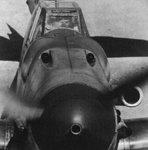 bf_109front_198.jpg26.3 KB · Views: 1,816
bf_109front_198.jpg26.3 KB · Views: 1,816 -
 bf_109etrop_2_156.jpg58.3 KB · Views: 1,601
bf_109etrop_2_156.jpg58.3 KB · Views: 1,601 -
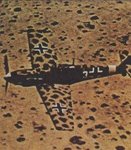 bf_109e_4trop_408.jpg16.7 KB · Views: 1,627
bf_109e_4trop_408.jpg16.7 KB · Views: 1,627 -
 bf_109e_166.jpg18.1 KB · Views: 1,598
bf_109e_166.jpg18.1 KB · Views: 1,598 -
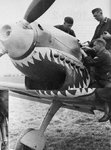 bf_109c_1_sharkmouth_956.jpg66.7 KB · Views: 1,611
bf_109c_1_sharkmouth_956.jpg66.7 KB · Views: 1,611 -
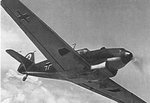 bf_109c_164.jpg9.7 KB · Views: 1,588
bf_109c_164.jpg9.7 KB · Views: 1,588 -
 bf_109b_2_159.jpg14.8 KB · Views: 1,600
bf_109b_2_159.jpg14.8 KB · Views: 1,600 -
 bf_109v_13_715.jpg30.2 KB · Views: 1,627
bf_109v_13_715.jpg30.2 KB · Views: 1,627 -
 bf_109v_7_254.jpg8 KB · Views: 1,609
bf_109v_7_254.jpg8 KB · Views: 1,609 -
 bf_109v_4_185.jpg21.2 KB · Views: 1,634
bf_109v_4_185.jpg21.2 KB · Views: 1,634 -
 bf_109v_1_937.jpg9.7 KB · Views: 1,619
bf_109v_1_937.jpg9.7 KB · Views: 1,619



